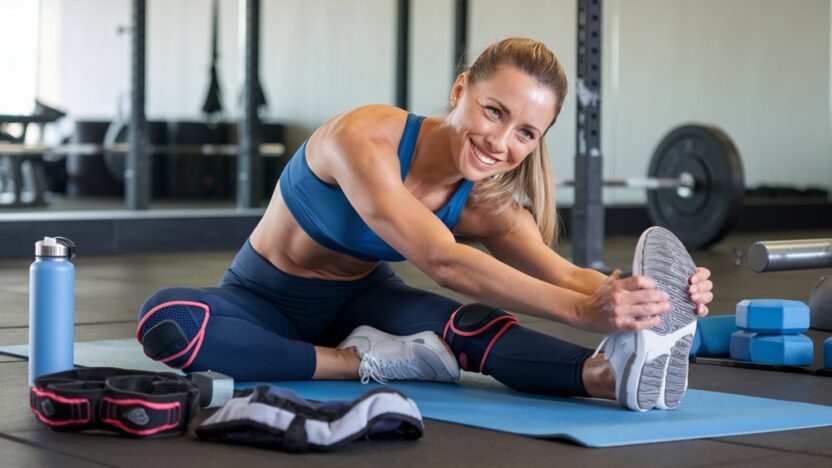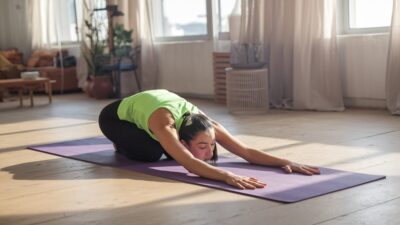To exercise safely, you'll need to establish essential habits that protect your body and maximize results. Start with a proper 5-10 minute warm-up of light movements and dynamic stretches to prepare your muscles. Always wear appropriate athletic shoes with good support, and choose moisture-wicking clothes that suit the weather. Maintain proper form during exercises, staying mindful of your body's signals and limitations. Stay hydrated by drinking water before, during, and after workouts, while fueling your body with balanced nutrition. Don't forget to incorporate rest periods between workouts, as recovery time is vital for preventing injuries. These fundamentals are just the beginning of your journey toward safer, more effective workouts.
Warm Up and Cool Down
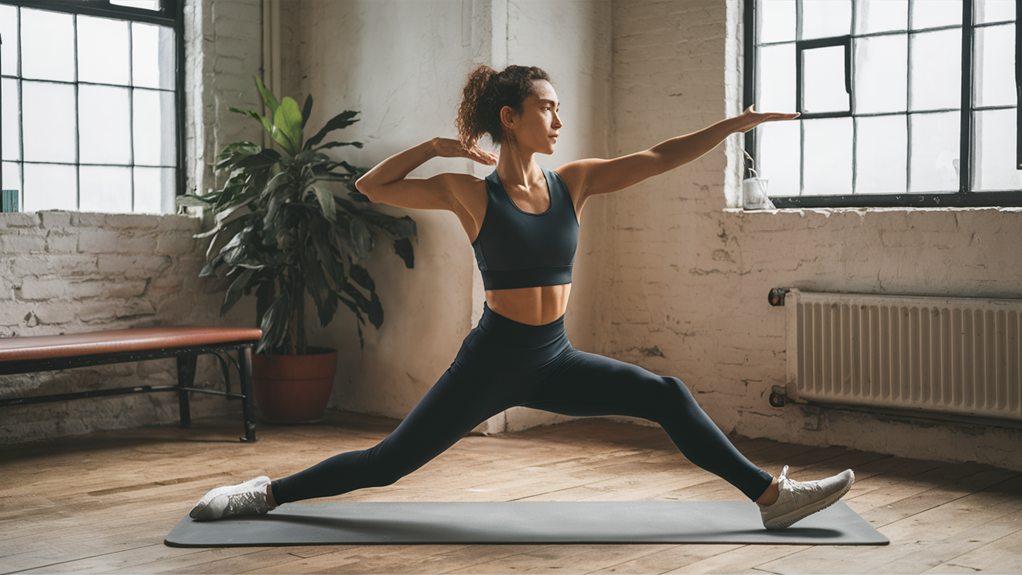
Launching into exercise without preparation can lead to injuries and reduced performance. Before you start any workout, it's crucial to dedicate 5-10 minutes to proper warm-ups, which help prepare your body for the upcoming activity. Incorporating injury prevention techniques during your warm-up can further enhance your workout safety.
Start with light movements, like walking or arm circles, to gradually increase your heart rate and blood flow to your muscles. Dynamic stretches, such as leg swings, arm rotations, and gentle twists, will help improve your range of motion and flexibility before the main workout. You'll notice your muscles feeling more loose and responsive as you progress through these movements.
Once you've completed your exercise session, don't rush to finish – cooling down is just as important as warming up. During your cool-down phase, spend 5-10 minutes gradually decreasing your activity level while incorporating static stretches. Hold each stretch for 15-30 seconds, focusing on the major muscle groups you've just worked.
This helps prevent muscle soreness, reduces the risk of dizziness from sudden stops, and allows your heart rate to return to normal safely.
Proper Equipment and Attire
With your body properly warmed up, you'll need the right gear to maximize your workout's safety and effectiveness. It's also crucial to verify that your equipment is well-maintained and suitable for your fitness level, as this can greatly lower the risk of injury.
Start by selecting athletic shoes that match your activity, confirming they provide proper support and cushioning for your specific exercise routine. Remember to replace your shoes every 400-500 miles of use, as worn-out footwear can lead to injury.
Your workout clothes should be moisture-wicking and appropriate for the weather conditions, allowing freedom of movement while maintaining proper body temperature. In cold weather, dress in layers that you can remove as you warm up, and don't forget protective gear like hats and gloves.
For hot weather, choose lightweight, breathable fabrics that help prevent overheating.
Injury prevention also depends on using proper safety equipment for your chosen activity. If you're cycling, always wear a helmet that fits correctly. For contact sports, use appropriate padding and protective gear.
When strength training, consider using weight-lifting gloves and a sturdy weight belt for heavy lifts. Don't forget to remove any loose jewelry that could get caught during exercise, and keep long hair securely tied back.
Following these safety guidelines for seniors can further enhance your exercise experience and reduce the risk of injury.
Exercise Form and Technique
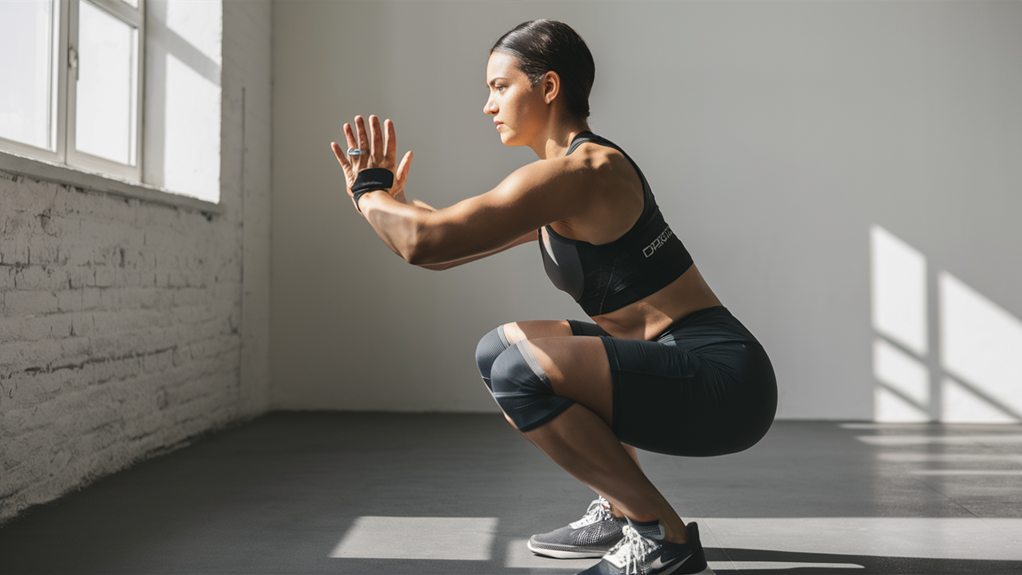
Proper form serves as the foundation for safe and effective exercise. When you're working out, maintaining proper form isn't just about looking good – it's about protecting your body from injury and maximizing your results.
Before starting any new exercise, take time to learn the correct movements and positioning from qualified instructors or reliable resources. Additionally, avoiding overtraining is vital for injury prevention; make sure to listen to your body and allow adequate recovery time between workouts to prevent strain and fatigue essential CrossFit injury prevention tips.
Here's why proper form matters so much during exercise:
- You'll considerably reduce your risk of painful strains and injuries that could sideline your fitness goals.
- Your muscles will work more efficiently, helping you build strength and endurance faster.
- You'll feel more confident and in control of your movements, leading to better workout experiences.
- Your body will develop balanced muscle strength, preventing future posture problems.
- You'll get better results from every rep, making your workout time more valuable.
Remember to start slowly with new exercises, focusing on mastering the basic movements before increasing weight or intensity.
If you're unsure about your form, don't hesitate to use mirrors, record yourself, or ask a fitness professional for guidance. When you feel fatigue setting in, it's vital to maintain proper form or end your session rather than risk injury.
Hydration and Nutrition
Beyond mastering exercise form, maintaining ideal hydration and nutrition levels can make or break your workout success. Hydration is essential not just for performance but also for metabolic processes and digestion, as it helps transport nutrients throughout your body.
You'll need to drink plenty of water before, during, and after exercising to prevent dehydration and maintain peak performance. Start hydrating at least two hours before your workout, and keep sipping water throughout your routine, including during cool-downs. The essential role of hydration in a balanced diet can't be overstated.
When it comes to nutrition, timing is everything. You should eat a balanced meal containing carbohydrates and protein about 2-3 hours before exercising, or have a light snack 30 minutes prior if you're short on time. Good pre-workout snacks include banana with peanut butter, yogurt with berries, or whole grain crackers with cheese.
After your workout, your body needs nutrients to recover properly, so eat within 30 minutes of finishing. Focus on lean proteins and complex carbohydrates to replenish energy stores and help repair muscles.
Remember that sports drinks aren't always necessary – they're best reserved for intense workouts lasting longer than an hour or during extremely hot weather conditions.
Recovery and Rest Periods
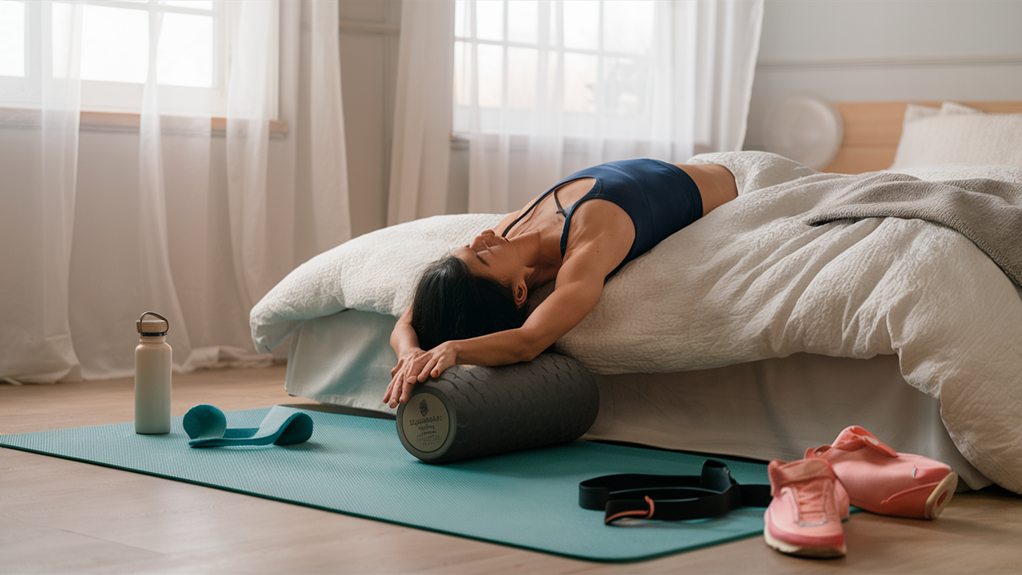
Recovery time serves as the foundation of any effective workout routine. When you're pushing your body to get stronger and fitter, you'll need proper rest periods to maintain joint safety and prevent injuries.
It's also vital to avoid overtraining, which can lead to burnout and hinder your progress. Your muscles need time to repair and rebuild, which happens during these important rest intervals between workouts.
Safe weight loss workouts emphasize the importance of listening to your body and adjusting your routine accordingly.
Here's what happens when you prioritize recovery in your exercise routine:
- Your body repairs tiny muscle tears, making you stronger and more resilient
- Your joints get much-needed time to reduce inflammation and restore mobility
- Your energy stores replenish, helping you feel refreshed and ready for your next workout
- Your mind recharges, reducing the risk of exercise burnout and maintaining motivation
- Your immune system strengthens, keeping you healthier and more consistent with training
You'll want to guarantee you're getting at least one full rest day between intense workouts of the same muscle groups.
During recovery periods, you can still stay active through light activities like walking or gentle stretching.
